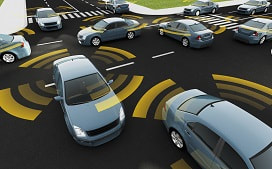
Steve Kerrigan of LexisNexis Risk Solutions outlines how telematics has changed the market and examines where this technology is heading next. Telematics is arguably the first InsurTech proposition to have a profound impact on the insurance market, fundamentally changing the way that brokers and insurers engage with customers through the lifetime of their policies. For brokers, telematics offers differentiation in a fiercely competitive market and a unique opportunity to take an active role in lowering claims costs for insurer partners. We now have sound evidence of the effectiveness of telematics in reducing claims costs, reducing accident severity and frequency, reducing premiums and reducing road casualties in young drivers. Aside from the risk mitigation benefits, these factors build trust and loyalty for brokers in a market where these qualities are so hard won. Pricing Based on our analysis, the use of telematics has resulted in reductions of: 32% in premiums (£800) compared to a traditional policy; 43% in road casualties amongst the youngest drivers over the past eight years; 30% in claim frequency; and 35% in claims severity and cost. If more of us had telematics, there would be fewer accidents, less pressure on health services and insurance costs could come down across the board. The data shows the potential for telematics outside of the young driver market. This enables brokers to broaden their propositions to wider segments of motorists – for example, older drivers where road casualties are rising, those with past convictions or people who are new to the UK. Cheaper data collection methods mean that solutions can be developed to make broker propositions viable for those customers paying hundreds rather than thousands of pounds for their insurance. Connectivity What brokers need to bear in mind is that, soon, after-market devices won’t be the only way to deliver telematics insurance. In five years’ time, we expect every new car to be connected, feeding data to car manufacturers. Brokers and insurers will want to get access to that data to deliver usage-based insurance. The brokers using telematics data today will have a distinct advantage in this new world of motor insurance. Even before then, drivers will benefit from advances in car connectivity. They will be offered immediate and on-going support if they have an accident, they will be able to access insurance not just based on how they drive in real-time but the safety features in their car, and they may also be able to link their car to the internet of things in the home. As young drivers have already begun to experience, data will become the currency of consumers. We now need to make the benefits of telematics clear to the wider population of motorists – not just to ensure drivers benefit today but so they are able to take advantage of new mobility solutions tomorrow. Brokers can play a key role in helping to make that happen. Steve Kerrigan is senior vertical market manager (telematics and connected car) at LexisNexis Risk Solutions.
This article is care of Lexisnexis risk solutions.

